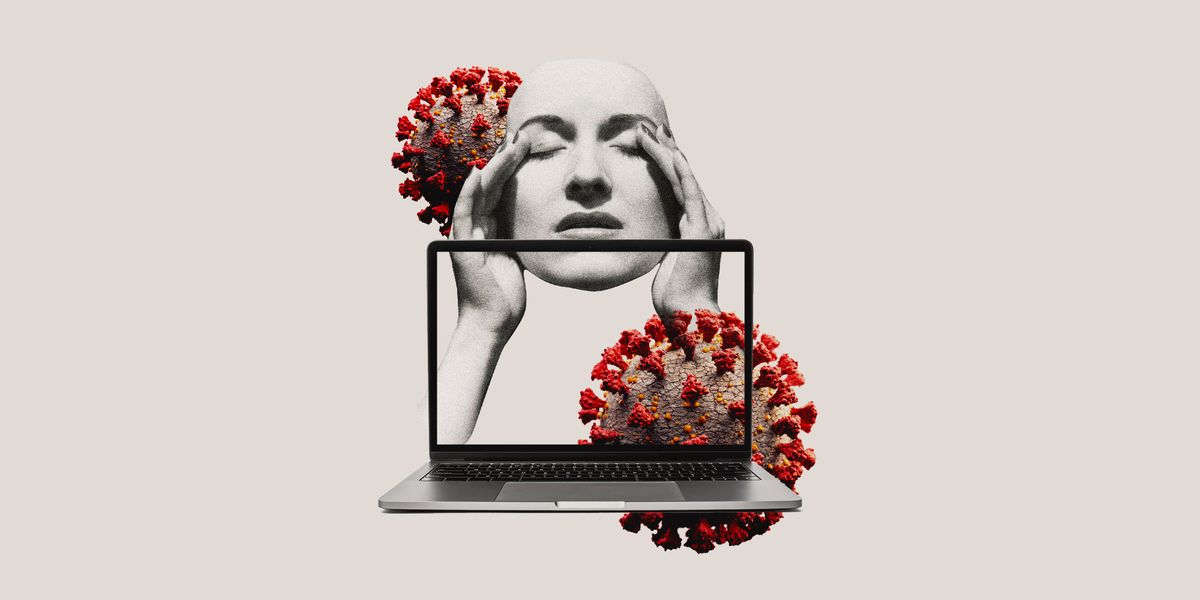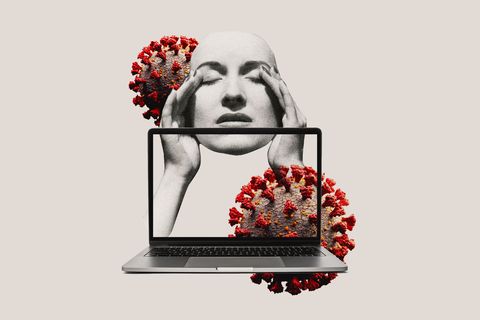About two months ago, my dad began to experience a series of strange neurological symptoms. He regularly felt pain radiate up and down his right arm, and occasionally into his neck and jaw. Sometimes his fingers on his right hand would tingle or go numb. The nerve pain was so uncomfortable that he had to take over the counter pain medication twice a day and once before bed so he could sleep. This went on for weeks.
Ever the medical practitioner (he’s a retired oral surgeon), my dad tracked his symptoms closely, and believes they stemmed from a spider bite he received while doing pushups in the basement.
After he showed me a picture of his bright red shoulder where he’d felt the bite, I immediately dove into exhaustive internet research on spider bite toxins, symptoms, and treatments. I am a science journalist and this sort of investigation is not out of the norm for me, but for a few fleeting moments my anxiety-addled brain took over: “What if this is somehow related to COVID-19?” I thought. When I began Googling “nerve pain” and “coronavirus” and seeing correlations I’d hoped not to, I knew I’d reached cyberchondria territory.
Cyberchondria—anxiety stoked by scouring the internet for clues to potential health issue—has been around since at least the day WebMD launched in 1996. But this unprecedented pandemic has caused a noticeable uptick in cases, according to a recent study.
The constant health threat, along with all the rapidly changing information surrounding it, is a prime breeding ground for this sort of hypochondriasis, and it’s hitting people with health anxiety the hardest.
“Anyone who has anxiety or a vulnerability to respond in an overly anxious way might be vulnerable to concerns about what’s going on now,” says Dr. Michael Mayer, Director and Co-Founder of The Reed Center, which specializes in Cognitive Behavioral Therapy (CBT) as treatment for anxiety-related disorders.
Psychiatrists like Mayer are also noticing that cyberchondria is now manifesting in people who never had a history of anxiety. “We’ve seen [people] who haven’t manifested anxieties in any problematic way, are, in some cases, now experiencing that, and I think [it’s] because there’s a lot of information out there that’s kind of confusing.”
Information about the novel coronavirus changes daily. While that’s understandable for a virus the medical community knows so little about, the lack of stable, concrete information is enough to rattle even the calmest of minds.
It’s natural to want to try to gain some control in such an unpredictable environment by unearthing as much information as possible—even if that information only serves to alarm you further. And the more people excessively consume virus-related media, the more their anxiety impacts their daily lives, the study confirmed.
Cyberchondria boils down to a compulsive disorder, according to Maher. The compulsion is a response intended to reduce fear or anxiety, even though it often results in a heightening of those feelings.
Like any compulsion or addiction, it can be difficult to curtail the behavior, especially if you believe you’re getting something out of it. In the case of the pandemic, for example, you may be inciting your anxiety, but you may also be getting some important information that could help keep you safe, making it easy to justify the compulsion.
But as any CBT advocate will tell you, this vicious cycle can be broken. All it takes is a little brain rewiring.
“CBT teaches people to recognize the relationship between their thoughts, feelings, and behaviors,” says Dr. Stacia Casillo, Director of the Ross Center in New York. “It helps them to understand that it is not the situation itself that causes their anxiety; instead, it is how they interpret and then respond to a situation that contributes to their negative feelings.”
A therapist might employ CBT by assessing the client’s “anxiety cycle,” as Casillo calls it. “The client and therapist create a conceptualization of the thoughts, feelings, and behaviors that are typical of their anxiety reaction and the thoughts and behaviors that keep that cycle going. A treatment plan would consist of providing psychoeducation on health anxiety, teaching skills to challenge anxious thinking, replacing maladaptive coping behaviors with healthy coping skills, and promoting distress tolerance and acceptance of what they do and do not have control over.”
Clinicians like Casillo and Mayer have had much success using CBT to treat patients with cyberchondria and various other health anxieties. But what about people who can’t afford a therapist or don’t have insurance? A recent study published in the Journal of Psychiatric Disorders suggests an alternative form of CBT that doesn’t involve traditional therapy, and may be just as—if not more—successful at treating cyberchondria.
iCBT, or internet CBT, is an online CBT program designed to give you all the same lessons and tools you might gain working one-on-one with a CBT-trained therapist. The study looked at The Health Anxiety Course, which is a research tool from the Virtual Clinic,an Australian-based mental health research center.
The course is made up of 6 lessons taken over 12 weeks, and teaches skills including “challenging negative thinking patterns about bodily symptoms, exposure to feared situations and sensations” and behavioral strategies to reduce internet searching. It even offers a lesson plan on why less accurate, alarmist health news often comes up first in Google searches (hint: search engine optimization).
At the end of the study, researchers found that those who participated in the iCBT course showed a “significantly greater reduction” in cyberchondria than the control group who received psychoeducation pamphlets, periodic monitoring, and optional support from a clinician.
This is not to say that traditional CBT treatment isn’t as beneficial. The iCBT version may have been effective in this instance simply because it was a more guided experience. What’s clear, though, is how useful CBT can be for anyone with cyberchondria or health anxiety right now.
If you’ve found yourself unable to look away from the New York Times case tracking map, below are some CBT coping techniques that might be helpful for you.
Limit your health searching
“Pick one reputable online medical resource (i.e. Mayo Clinic) to engage in online symptom checking,” says Casillo.
Reduce the number of times (and amount of time) you conduct searches. Try getting it down to once a day for 10 minutes.
Recognize and delay the impulse
If you feel the need to look up something health-related, don’t immediately act on that impulse. Wait an hour and see if the urge is still there at that point.
Put down the phone
It can be much harder to ignore an impulse to search if you’re sitting in front of a screen. Casillo suggests engaging in other activities when you’re feeling anxious that promote well being like exercising, taking a walk outside, playing a game, watching a fun show, or cooking.
Challenge your thinking
“While your initial instinct may be to imagine the worst-case scenario, look for alternative, more neutral reasons why you may be experiencing those symptoms,” says Casillo.
If reading health news scares you, try looking at it from a more subjective place rather than a personal/emotional place.
Get comfortable with the uncomfortable
Uncertainty, especially now, is going to be there no matter what, so we have to find a way to live with it without letting it take over. Mayer likens it to gardening when you know there are bees around. You should be aware of them, but that awareness shouldn’t stop you from doing the thing you enjoy.
“What we want to do is help people respond more effectively by making room for the uncertainty, so they can get back to their life, back to their family, to their friends, to things that they care about,” he says.
This content is created and maintained by a third party, and imported onto this page to help users provide their email addresses. You may be able to find more information about this and similar content at piano.io

